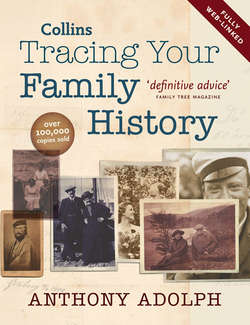Читать книгу Collins Tracing Your Family History - Ryan Tubridy, Anthony Adolph - Страница 71
USING GENERAL REGISTRATION
ОглавлениеGeneral Registration was introduced in England and Wales on 1 July 1837 as part of the government’s attempts to find out how many people lived in the country, how quickly they were breeding, what was killing them – and, of course, how much they could be conscripted and taxed in the intervening time. The country was divided into registration districts, each split into sub-districts under a local registrar. These local registrars were responsible to the registrar general at the General Register Office (GRO), now part of the Office of National Statistics. Births and deaths were to be reported to the local registrar, who reported them to his superintendent registrar, who in turn sent copies to the Registrar General in London. Marriages could be performed by Anglican clergy or local registrars in their own offices or in Catholic or non-conformist chapels. From 1898, non-Anglican marriages could be performed in the presence of an authorised person (usually a clergyman) without the local registrar needing to be present. In all cases, copies of the resulting certificates were sent to the registrar general.
The registrar general’s clerks then compiled separate alphabetical indexes to births, marriages and deaths, each divided into four quarters of each year: January-March, April-June, July-September and October-December, known as the March, June, September and December quarters respectively.
